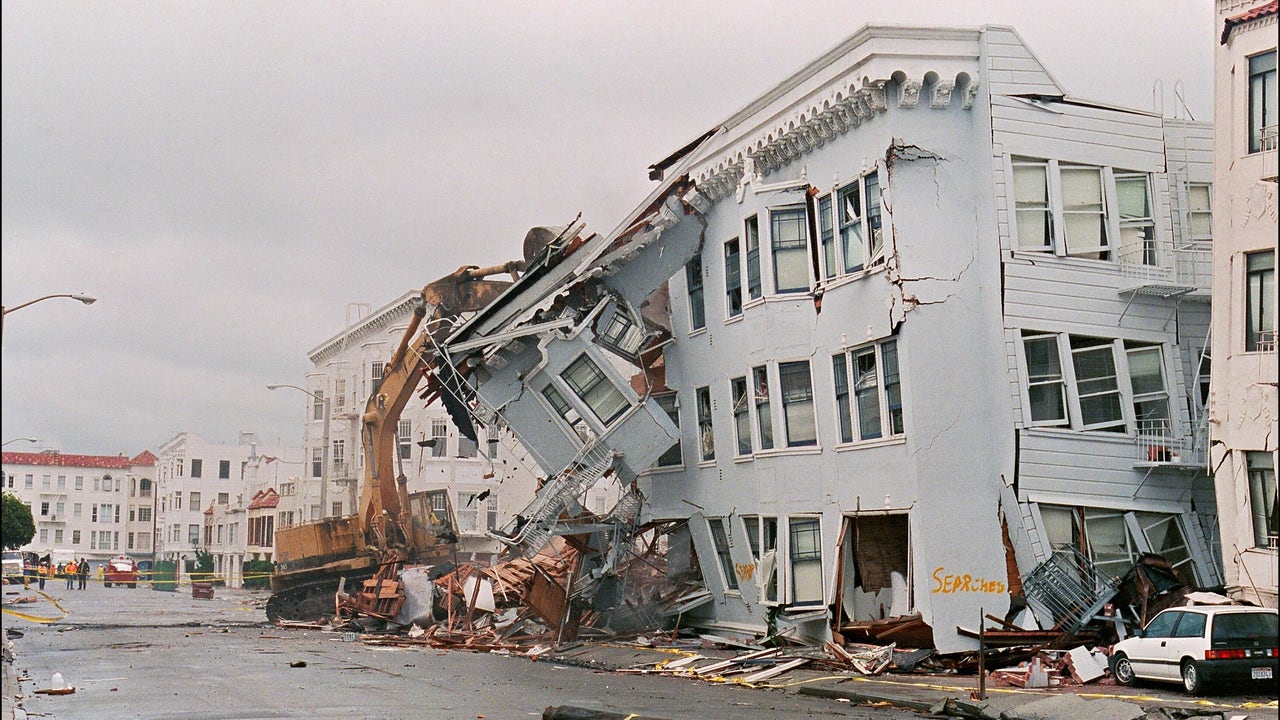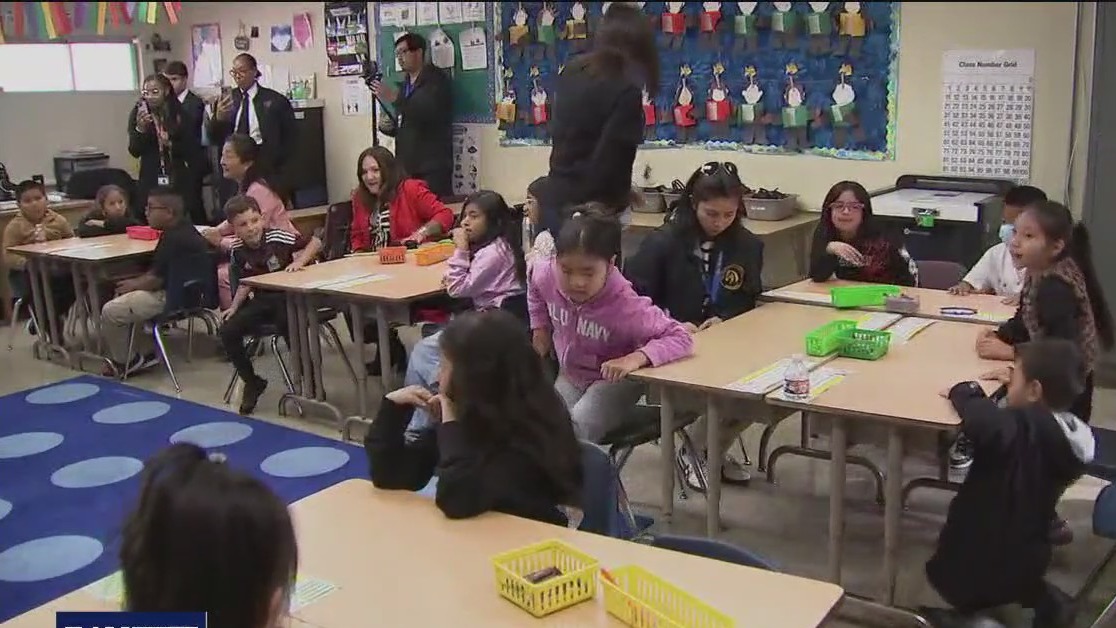
OAKLAND, Calif. – Friday marked 36 years since the Loma Prieta earthquake struck the Bay Area, killing 63 people and injuring thousands. The 6.9-magnitude earthquake lasted 20 seconds, hitting at 5:04 p.m. as the San Francisco Giants took on the Oakland A’s in the 1989 World Series.
The devastating earthquake sparked more than 40 fires and caused nearly $7 billion in damage in the Bay Area. San Francisco’s Marina District was hit especially hard because it was built on a landfill.
Earthquake epicenter
The epicenter of the earthquake was along the San Andreas Fault, about 56 miles south of San Francisco and 10 miles north of Santa Cruz, according to the California Department of Conservation.
The agency says the earthquake was felt as far south as San Diego and into western Nevada.
The Bay Area was struck by hundreds of aftershocks in the week following the 6.9 earthquake. Those aftershocks included a 5.2-magnitude earthquake about two minutes after the initial quake.
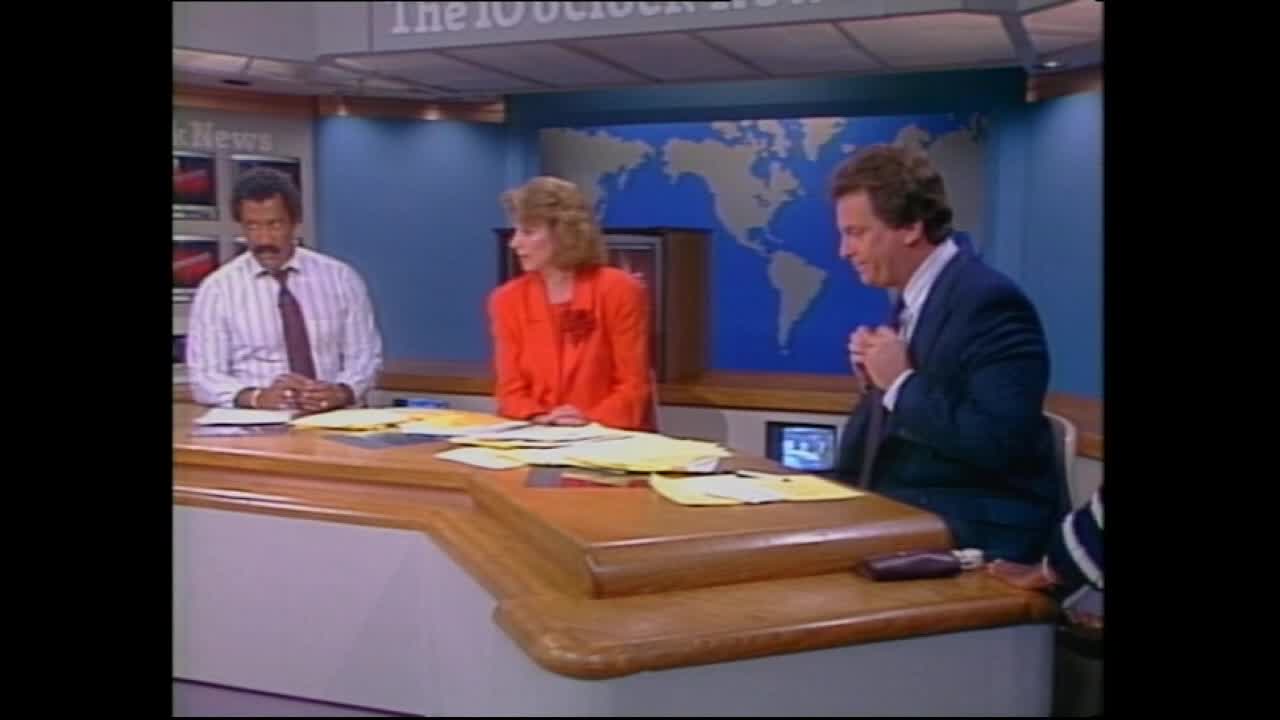
More than 18,000 homes were damaged in the earthquake and 963 were completely destroyed, according to the state.
Another 2,575 businesses were damaged, and 147 destroyed.
In addition to the buildings damaged, a section of I-880 in Oakland and a portion of the Bay Bridge collapsed during the earthquake.
Many Bay Area residents still remember that day.
Steve Walter was a scientist in 1989 with the USGS Earthquake Research Center in Menlo Park.
“We looked up and there was a crack forming in the wall above us, and so [we thought] ‘okay, time to do something,'”he said. “So we got up and both stood in the doorway.”
Walter says now, 36 years later, research by earthquake scientists at the USGS has helped the public better understand the Bay Area’s risk.
What worries him now, is the impact the current government shutdown is having on the USGS Earthquake Science program.
“It’s not just furloughs, but there have been layoffs too,” Walter said. “We’re losing the future seismologists and scientists who continue the research and extend it further.”
Earthquake risk today
Walter says cuts can impact not just early warning systems, but also the science and research needed to monitor faultlines, like the Hayward fault, which has had two small earthquakes in the past three weeks.
He says the Hayward fault hasn’t had a big earthquake since 1868 and that’s more likely where one would strike in the future.
“It’s going to be a lot worse than Loma Prieta, even though it will be about the same size,” Walter said.
He notes Loma Prieta’s epicenter was in a remote, mountainous area, while Hayward is much more populated.
“Hayward is in the middle of the most populated area on the west coast,” Walter said.
According to the Berkeley Seismology Lab, the Bay Area has a 72% chance of having a large earthquake greater than 6.7 in magnitude between now and 2044.
The key to staying safe when there is a major earthquake is preparation, the lab says.
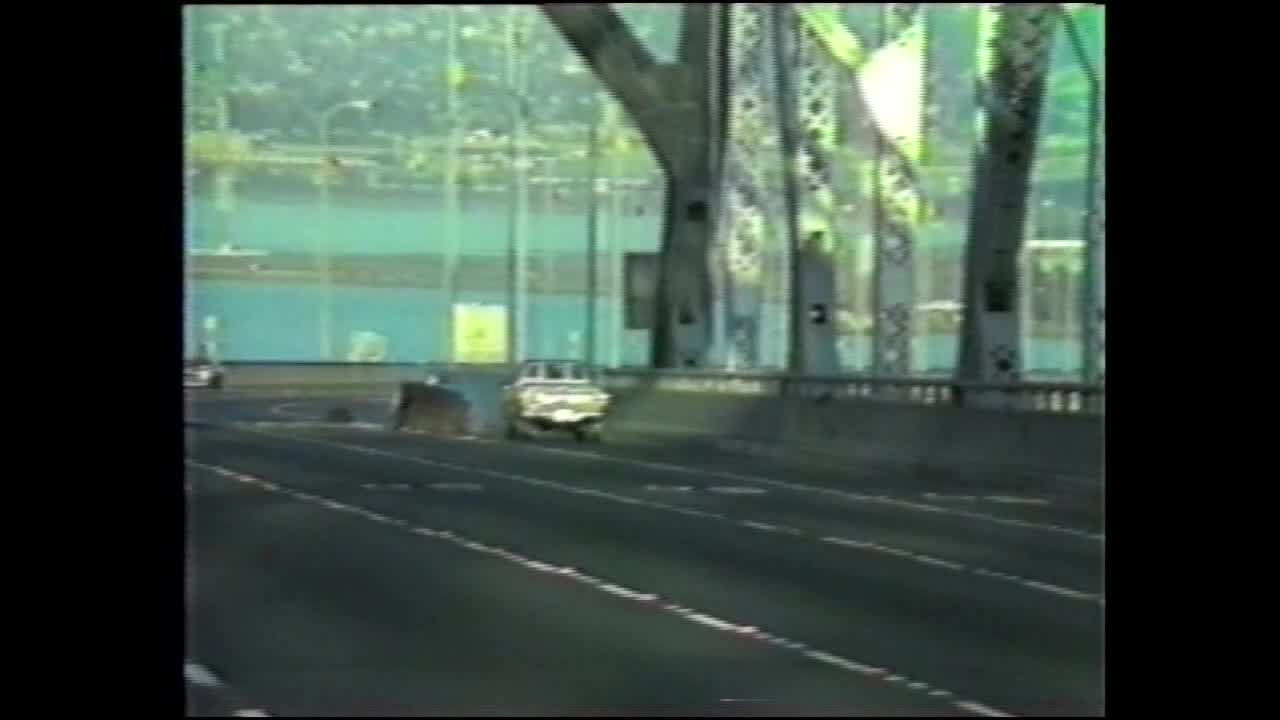 Loma Prieta earthquake: Bay Bridge buckles
Loma Prieta earthquake: Bay Bridge buckles
A section of the upper deck of the Bay Bridge fractured and plummeted onto the lower level during the 1989 Loma Prieta earthquake. These images were recorded from the water and on the bridge shortly after the quake.
Preparation and resources
Ahead of an earthquake, experts advise identifying potential hazards in your home, creating a disaster preparedness plan, gathering a distaster kit and looking for potential weaknesses in your home or building and fixing.
On the Friday anniversary, San Francisco’s Guadalupe Elementary School students took part in an emergency drill with Mayor Daniel Lurie, taking cover under desks.
“We are all in this together. Preparedness takes all of us. We want you to make a plan, we want you to be prepared,” the mayor said.
San Francisco’s executive director of emergency management says it’s not a matter of if a large earthquake will happen, but when.
“Let’s take this day today when we think [about] what happened in 1989 to make a plan, to sit with your family and talk about what you will do in an earthquake,” said Mary Ellen Carroll, executive director of San Francisco’s Department of Emergency Management.
In California, homeowners can receive up to $3,000 for earthquake retrofitting as part of the California Residential Mitigation Program and Earthquake Brace + Bolt Program. The program assists with seismic retrofit, which “bolts” the foundation of your home to the frame of the house and addresses what experts call “cripple walls” with plywood.
In 2019, California launched an earthquake warning alert system via the MyShake app, which was developed at UC Berkeley.
The technology does not predict earthquakes, but allows for earthquake warnings seconds before a quake begins.
The Source: Previous reporting, Berkeley Seismology Lab, California Department of Conservation and the MyShake app, interviews with Steve Walter, a retired USGS scientist.
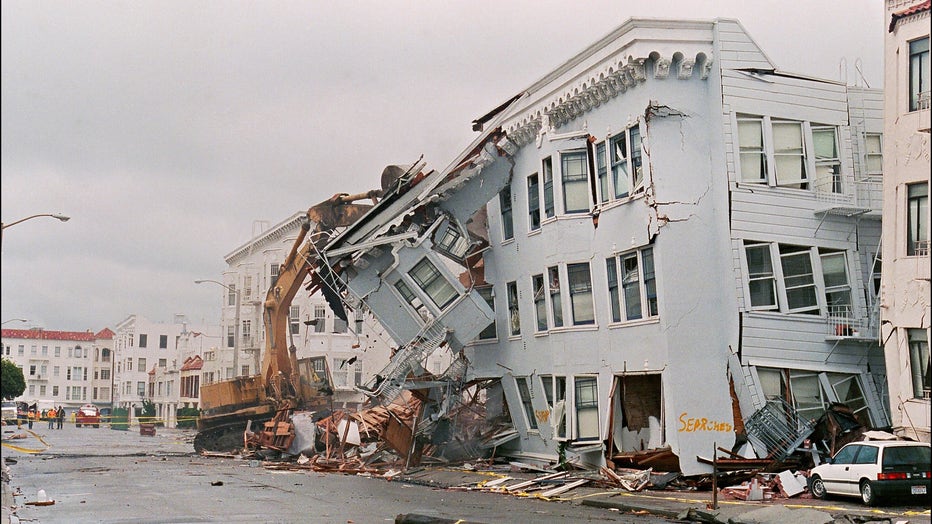
TOPSHOT – The front of an apartment building in the Marina District in San Francisco is ripped off 21 October 1989 October 1989 after a quake erupted 17 October, killing an estimated 63 people and doing USD 1 billion-worth of damage. It was 5.04 pm l
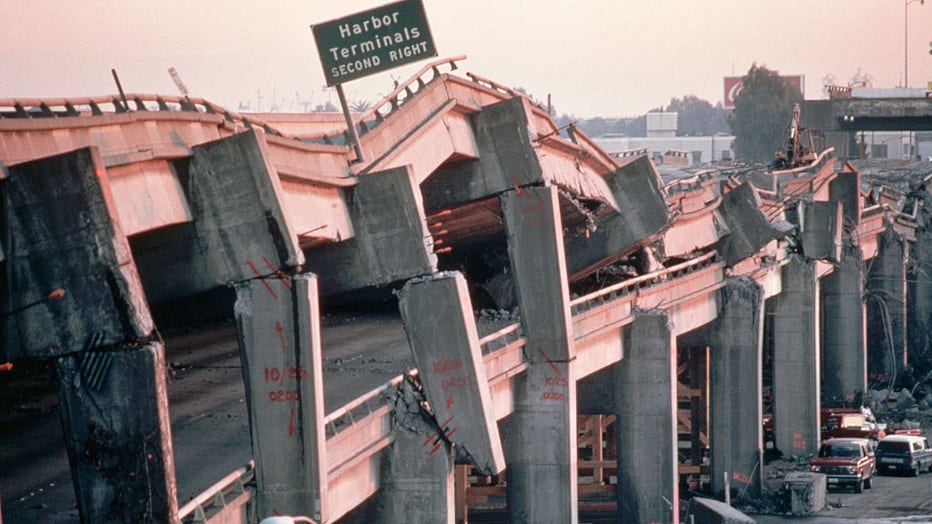
The remains of the Cypress Freeway, which ran through the center of Oakland, following the San Francisco, or Loma Prieta, Earthquake of 1989. (Photo by Jim Sugar/Corbis via Getty Images)
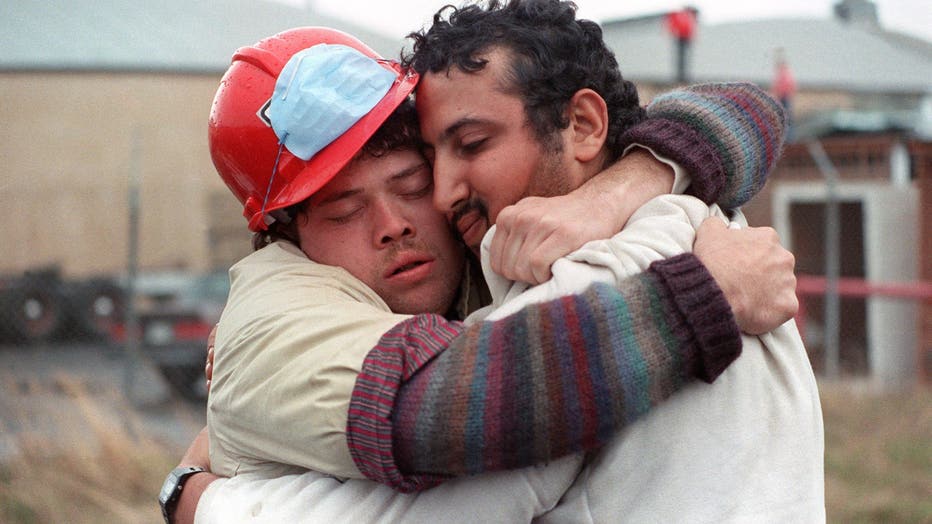
TOPSHOT – Search and rescue support workers Tim Schilwachder (L) and Mamdouch Shabaan embrace 21 October 1989 by the Cypress Structure above 28th and Cypress Sts, shortly after a man was rescued alive there. A powerful earthquake has rocked San Franc
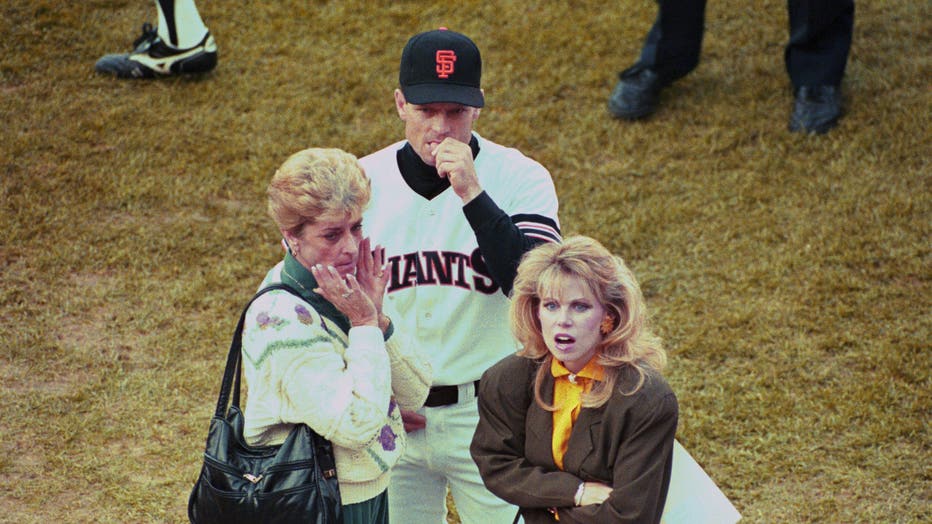
(Original Caption) San Francisco: Giants’ Brett Butler leads his family off the Candlestick Park after an earthquake cancelled game 3 of the World Series.
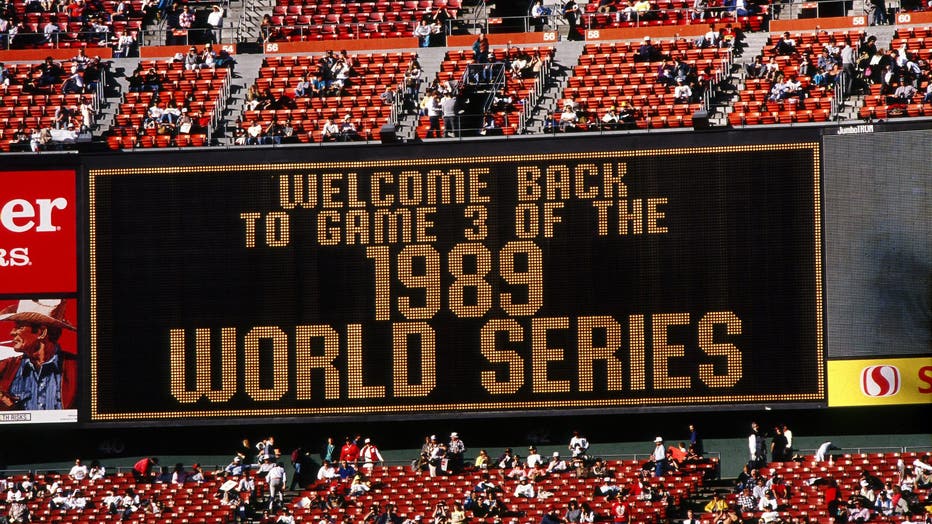
SAN FRANCISCO, CA – OCTOBER 27: A sign reading “Welcome back to game 3 of the 1989 World Series” is displayed prior to World Series game three between the Oakland Athletics and San Francisco Giants on October 27, 1989 at Candlestick Park in San Franc
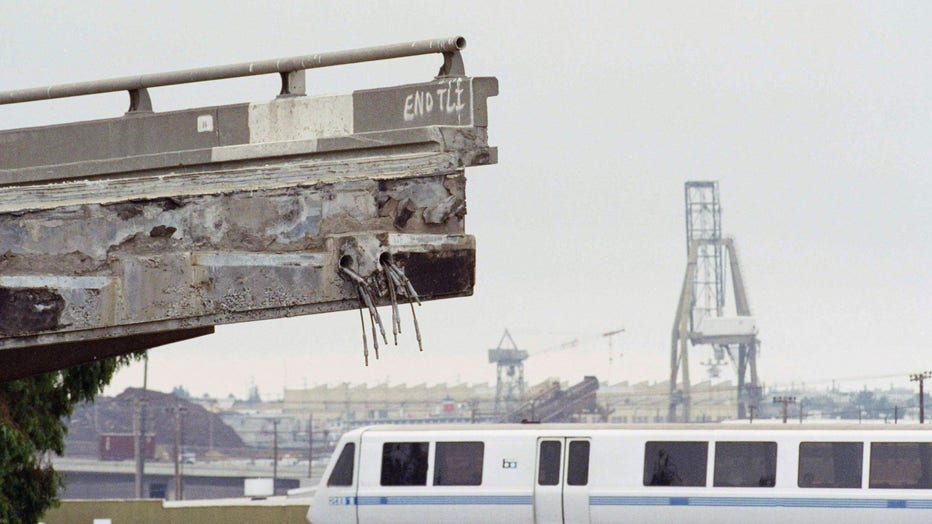
1989: The Loma Prieta earthquake collapses the Bay Bridge. BART runs 24-hour transbay service for two months, keeping the Bay Area connected. (Courtesy: BART)

